When the bugs bite, when the bees sting (when you’re feeling saaad…)
Now that you can’t get “The Sound of Music” out of your head (sorry not sorry), there’s a reason bee stings were included in the iconic musical number—they hurt!—as do the bites and stings of many other insects. While most are just annoying, there are some that require medical attention.
More than one million Americans go to the emergency room each year for bug bites, and of those, about 5% are treated for injuries from the bite and 2% of those require hospitalization, according to data from the National Institutes of Health. (This means 95% of all bug bites seen in the ER are treated there, and sent home.)
Get The Healthy @Reader’s Digest newsletter
Not all bug bites…are bug bites?
One thought to keep in mind when treating a “bug bite” is that very often what people assume are bug bites are… something else, says Justin Arnold, DO, an emergency medicine doctor, the medical director for the Florida Poison Information Center Tampa, and an assistant professor in the Department of Emergency Medicine at the University of South Florida. Bug bites have become a shorthand for any unexplainable bump on the skin, he adds.
“Most ‘bites’ that come into a doctor’s office or emergency department aren’t insect or spider bites,” he explains. “In the majority of cases they are actually rashes, allergic reactions (like hives), skin abscesses, boils, some kind of infection or even zits. These may need treatment, and some can be quite dangerous—so we certainly still want you to come in, but don’t get overly concerned about the bug bite part.”
However, he adds, that if you do know that something bit you, report that info and bring in the bug or spider if you are able to safely catch it…emphasis on safely.
Here are some steps to help you identify the type of bug bite. Then determine the best way to treat the bite. For some, that might mean seeking out medical attention depending on the severity and type of symptoms. Here are key ideas experts want you to keep in mind about these types of bites—including when you shouldn’t brush them off.
This Is the #1 Worst Soap Fragrance for Repelling Mosquitoes, Says New Study

1. Mosquitoes
Mosquito bites on their own aren’t a huge deal, but mosquitoes can pass on potentially serious illnesses: West Nile Virus, Zika, and as of summer 2023, US-acquired malaria among them. “In the United States, we see more West Nile Virus than Zika,” says Nicholas E. Kman, MD, emergency medicine physician at The Ohio State University Wexner Medical Center. “About 80% of people who are infected with West Nile Virus do not feel sick. For people who do, symptoms can include fever, headache, tiredness, nausea, vomiting, swollen lymph glands and a rash on the chest, stomach or back.” Symptoms usually last from a few days to a few weeks, according to Dr. Kman. “Some people can get serious infections like encephalitis (an infection of the brain),” he says. “With Zika, the CDC guidelines state that women should wait eight weeks, and men should wait six months after travel or symptomatic infection before attempting to conceive.”
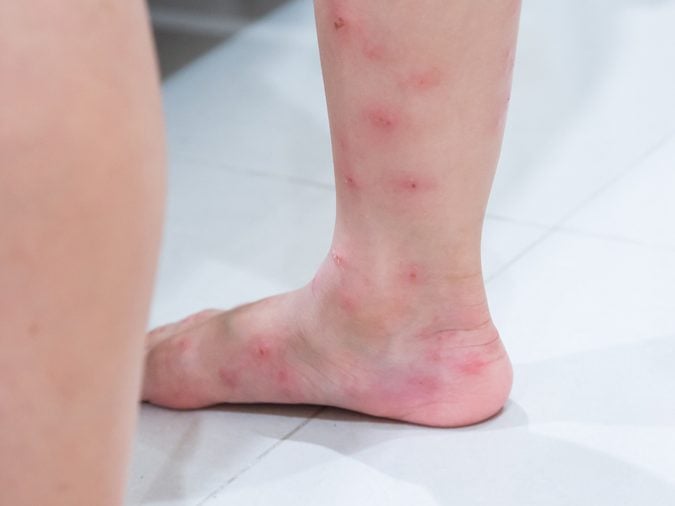
2. Fire ants
These vicious biters can produce red, blistered stings in clusters. “Fire ants characteristically bite to attach themselves to their victim and then sting multiple times in a semicircular pattern,” says Carah Santos, MD, pediatric allergist at National Jewish Health. “Simultaneous stings from otherwise non-poisonous insects such as fire ants can result in a toxic reaction—headache, weakness, lightheadedness, drowsiness, fever, diarrhea, muscle spasms, fainting or seizures. These symptoms require immediate medical attention.”
Also, if you develop symptoms of an allergic reaction, such as difficulty breathing, hives, stomach cramps, nausea, diarrhea, or dizziness, head to the ER.
Fleabites: What They Look Like and How to Prevent and Treat Them
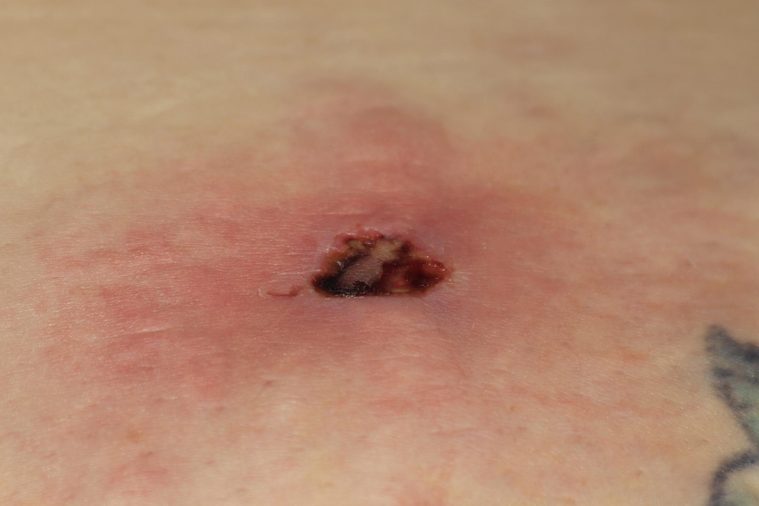
3. Brown recluse spider
In the United States, Dr. Arnold says there are really only two spiders whose bites can cause significant pain and serious injuries: Black widow and brown recluse spiders. Brown recluse spiders are found mainly in Central and Southeast United States—and as the name suggests, they tend to hide away from the world and won’t bite unless they feel they’re in danger. But when they do bite, watch out. “Its bite is often described as a sharp burning pain and over the several hours following the bite, the area becomes discolored and forms an ulcer that can take several weeks to heal,” Dr. Arnold says. In addition to the wound, individuals can also develop fevers, muscle aches, and in rare cases severe anemia as a result of the venom.
“If the skin is warm, hot, blistering or sloughing, go to your ER,” Dr. Kman says. “If urine becomes dark, you develop fever, chills or seizures, this can be the sign of a systemic infection.”
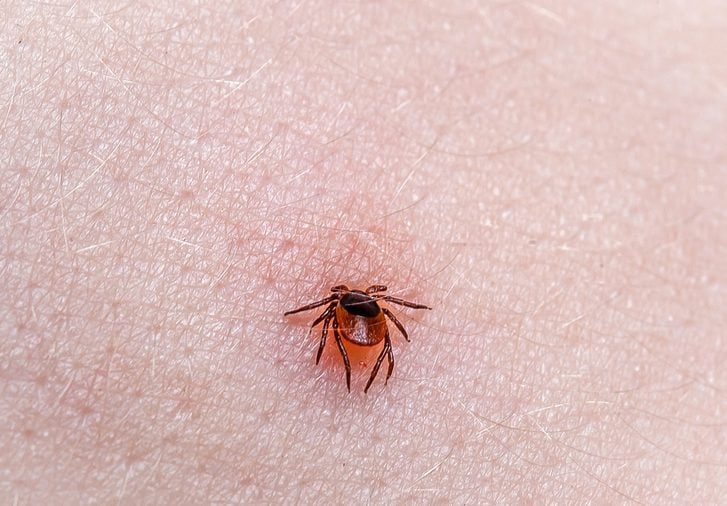
4. Ticks
Tick bites themselves aren’t dangerous, but they can put you at risk for a host of serious illnesses. Lyme disease and Rocky Mountain spotted fever are the usual suspects, says Heather Hawthorne, MD, a family practice physician at Doctor On Demand, but ticks are actually associated with more than 60 illnesses.
One trick to limiting the potential damage is catching the bite early. “The risk of getting an infection from a tick bite increases the longer a tick is attached to your skin,” she says. “See a doctor if you suspect a tick was attached more than 24 hours, a spreading rash appears, or you develop fever, muscle aches, headache, nausea, abdominal pain or other flu-like symptoms. Seek emergency care if you develop trouble breathing, heart palpitations, or a severe headache.”
Even if you don’t experience severe symptoms, you may want to see a doctor. “It’s never a bad idea to chat with a doctor if you are worried about a tick bite. A doctor can look at the bite, determine your risk for developing an infection, and in some cases prescribe an antibiotic to prevent Lyme disease if indicated.”
Here’s what you need to know to prevent tick bites, what to do if you get bitten by a tick, how to remove a tick, how to avoid these 12 tick mistakes and what to do if you find a tick in your home.
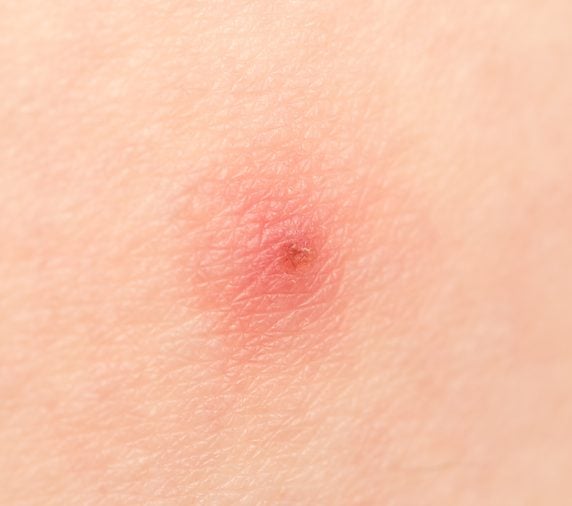
5. Bees
For most people, bee stings are just a bit of a pain. But certain post-sting symptoms mean it’s time to head for the ER. “After being stung by an insect, such as a bee, wasp, yellow jacket or hornet, you should immediately call 911 if you develop difficulty breathing, dizziness, stomach cramps, nausea, diarrhea, itchiness, progressive hives or swelling of the face, tongue, or throat, as these are symptoms of a systemic allergic reaction,” Dr. Santos says. “If you have a severe allergic reaction, it’s also a good idea to ask your doctor if allergy shots can reduce your risk of severe reactions with future stings.”
Learn the quick fixes for bee stings, bug bites, sunburn and other summer woes.
How a Nearly Fatal Bee Pollen Allergy Triggered My Adult-Onset Asthma
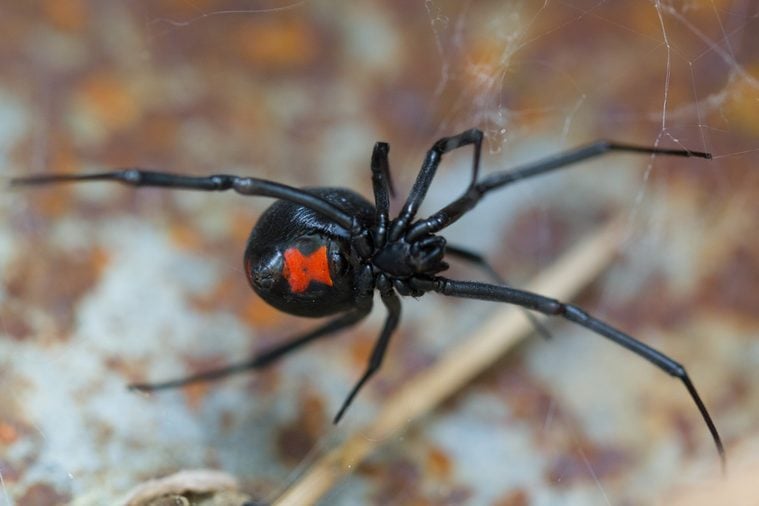
6. Black widow spider
The black widow spider is found throughout the United States, and these venomous spiders have an unmistakable red hourglass marking—and the potential to cause serious damage. It’s best to visit a doctor for these bites.
“Its bite often goes unnoticed until the victim develops severe pain over the next two hours,” Dr. Arnold says. In addition to pain at the bite site, individuals can develop muscle cramping, abdominal and chest pain, high blood pressure, rapid heart beat, muscle spasms, seizures and vomiting.
If someone is bitten by a black widow spider, they should go directly to the ER for assessment and stabilization—especially if you are a child, elderly or have a compromised immune system, he says.
Here’s What Spider Bites Look Like—and When to Call the Doctor

7. Scorpion
Scorpion stings usually result in localized pain, swelling and redness. “If you experience anything more severe than this, then you should seek medical help right away,” Dr. Hawthorne says. “Children and elderly adults should be evaluated by a doctor right away for all scorpion stings, especially if you suspect a bark scorpion sting, which is found in the desert Southwest. Call a doctor, call Poison Control or get to an ER for an evaluation. Children are at the greatest risk of developing severe symptoms after a sting. Symptoms can progress rapidly, so they need close supervision.”
The 12 Most Dangerous Bugs to Watch Out for This Summer and How to Protect Yourself
8. Puss caterpillar
These caterpillars may look cute and cuddly, but that “fur” is actually a series of poisonous spikes. They’re one of the “harmless” bugs you didn’t know could bite you.
For most tangles with the puss caterpillar, the first aid can take place at home. “Apply tape to your skin and pull it off repeatedly to remove the spines, wash the area with soap and water, then apply an ice pack wrapped in a cloth to manage the pain,” Dr. Hawthorne suggests. “Speak with a doctor if the pain persists, rash spreads, skin blisters badly or fevers develop. Also, see your doctor if you are not up to date on your tetanus booster. Get emergency medical care if severe symptoms develop such as swelling, nausea, difficulty breathing, chest pain, dizziness, headache, or fever.”
When to call the doc
The recommendation for treating most bug bites starts the same, according to Dr. Arnold: Wash it with soap and water, apply a cool compress, and monitor for signs of infection after the bite.
However, if you show any unusual or progressive symptoms, you should call your doctor, he says. These include a spreading rash, fever, vomiting, muscle aches, tremors, oozing, exhaustion, serious swelling, intensifying pain, or signs of an allergic reaction; or if your bite doesn’t look like it’s healing after a few days. Even if you’re not sure whether it is a bug bite or which bug bit you, these symptoms all require treatment regardless of the underlying cause.
In rare cases, bug bites can be quite severe and need emergency medical attention. If you lose consciousness, get a high fever, have extreme pain, a rapidly expanding wound, trouble breathing, chest pain, vomiting, confusion, go to the ER right away, Dr. Arnold says. Here are the best ways to treat every type of bug bite.
Get The Healthy @Reader’s Digest newsletter and follow The Healthy on Facebook, Instagram, and Twitter. Keep reading:
- Here’s How Often You Should Actually Take Your Blood Pressure, According to a Cardiologist
- These Are the 5 Worst Causes of Gut Inflammation, Says New Study
- 8 Subtle Hints That a Friendship Is Toxic, Say Experts
- Here’s What a Summer-long Break Would Do for Everybody’s Health, Say Experts
Additional writing and reporting by Charlotte Hilton Andersen.


